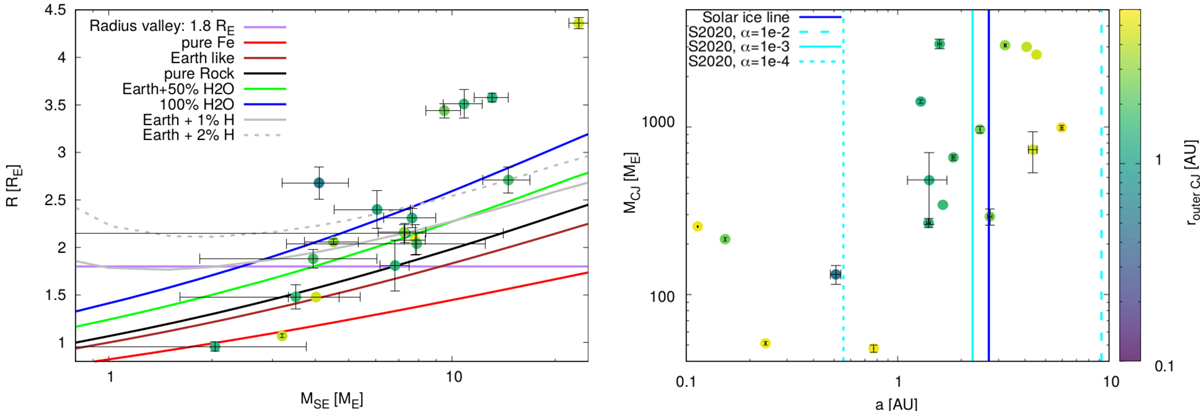Fig. 2.

Observed systems with transit and RV data that contain inner super-Earths and sub-Neptunes and outer gas giants. Left: mass-radius diagram for super-Earths and sub-Neptunes with outer gas giants, color coded by the orbital position of the outermost gas giant in the same system, router. The mass-radius relation determined by models with fixed composition following the model of Zeng et al. (2019) is shown. Also shown, in purple, is the position of the radius valley (Fulton et al. 2017), below which planets are presumably of a rocky nature. Right: orbital distance and masses of the cold Jupiters of the corresponding inner systems shown in the left panel. The planets are color coded by the orbital position of the outermost giant planet. In addition, we show the present-day position of the water ice line in the Solar System (dark blue) and the ice line positions in protoplanetary disk models following Savvidou et al. (2020) with different viscosities. The two giant planets with masses below 100 Earth masses are 55-Cnc-c and 55-Cnc-f. Some planets do not contain error bars in the database (see Table A.2), and thus have no error bars here.
Current usage metrics show cumulative count of Article Views (full-text article views including HTML views, PDF and ePub downloads, according to the available data) and Abstracts Views on Vision4Press platform.
Data correspond to usage on the plateform after 2015. The current usage metrics is available 48-96 hours after online publication and is updated daily on week days.
Initial download of the metrics may take a while.


